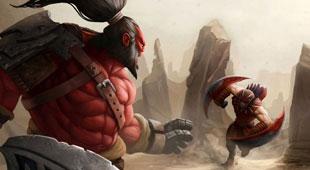
The guitar, as we realize it today, has a rich and complex historical past that dates again several centuries. If you have any sort of inquiries regarding where and how to use christmas music instrumental, you could call us at the web-site. Its evolution is a captivating journey that intertwines cultural influences, technological developments, and artistic expression. Understanding the origins of the guitar requires us to delve into the varied types of stringed devices that preceded it, the cultural contexts wherein they have been developed, and the gradual transformation that led to the trendy guitar.
The earliest ancestors of the guitar may be traced back to historical civilizations. Instruments resembling the guitar have been present in various cultures, including the historical Greeks, Egyptians, and Persians. Essentially the most notable of those early instruments is the lute, which emerged within the Middle Ages. The lute, with its rounded back and fretted neck, shared many traits with the fashionable guitar. It was broadly used in Europe through the Renaissance and Baroque periods, and its popularity laid the groundwork best amp for les paul the development of the guitar.
The term “guitar” itself is derived from the Latin word “cithara,” which refers to a stringed instrument. The transition from the lute to the guitar began in Spain through the 15th century. The Spanish guitar, recognized as the “vihuela,” was a key instrument in the development of the fashionable guitar. The vihuela had a flat back and was sometimes played with the fingers relatively than a plectrum. It featured six strings and was tuned equally to the modern guitar, making it a direct ancestor identify an instrument by its sound of the instrument we all know at the moment.
By the 16th century, the guitar began to take on its recognizable form. The introduction of the baroque guitar, which had 5 courses (pairs of strings), marked a major step in its evolution. This instrument was smaller than the vihuela and was typically used to accompany singers and different devices. The baroque guitar was fashionable among the nobility and was a necessary part of the music culture of the time. Its design and building strategies laid the inspiration for the classical guitar that may observe.
The nineteenth century saw the emergence of the fashionable classical guitar, which featured six single strings as a substitute of courses. This transformation was largely attributed to the work of Spanish luthier Antonio de Torres Jurado. Torres is usually referred to as the father of the modern guitar because of his modern designs that improved the instrument’s sound high quality and playability. He launched a bigger body size and a extra refined bracing pattern, which enhanced the guitar’s resonance and volume. Torres’ contributions set the usual for guitar development that remains to be adopted by luthiers right now.
As the d chord guitar evolved, so did its role in music. The 19th century was a period of serious change in musical styles, and the guitar tailored to these shifts. The rise of Romanticism introduced with it a new deal with individual expression and emotional depth in music. Guitarists comparable to Francisco Tárrega and Andrés Segovia began to elevate the instrument’s standing, showcasing its capabilities as a solo instrument. They expanded the guitar repertoire, incorporating classical compositions and unique works that highlighted the guitar’s unique voice.
The guitar’s affect continued to grow throughout the 20th century. The advent of jazz and well-liked music noticed the guitar take on new types, leading to the event of electric guitars. The electric guitar, invented within the nineteen thirties, revolutionized the music trade and remodeled the sound of common music. Iconic musicians reminiscent of Chuck Berry, Jimi Hendrix, and Eric Clapton popularized the electric guitar, cementing its place in rock and roll history. The electric guitar’s skill to amplify sound and create a wide range of tones opened up new potentialities for musical expression.
Today, the guitar is one in every of the most well-liked devices worldwide, transcending genres and cultures. Its versatility allows it to be used in numerous musical types, from classical and flamenco to rock, blues, and pop. The guitar has turn out to be synonymous with creativity and self-expression, inspiring numerous musicians to discover its prospects.
In conclusion, the historical past of the guitar is a testament to the instrument’s adaptability and enduring enchantment. From its ancient ancestors to the fashionable electric guitar, the guitar has advanced by cultural influences and technological developments. The contributions of luthiers, composers, and musicians have formed the instrument into a strong software for inventive expression. As we proceed to discover the guitar’s rich legacy, we will admire the profound impression it has had on music and culture throughout history. The journey of the guitar is removed from over, and its future guarantees to be as exciting as its previous.








Leave feedback about this